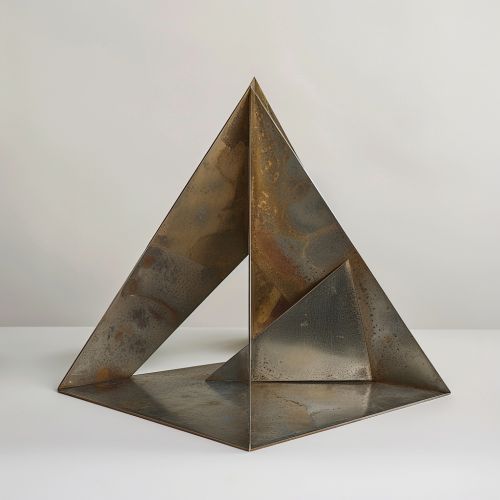Scalene Triangle: Difference between revisions
(Created page with "== Definition and Properties == A Scalene Triangle is a type of triangle in which all three sides have different lengths, and consequently, all three internal angles are also different. This is in contrast to equilateral and isosceles triangles, where two or more sides (and angles) are equal. The scalene triangle is one of the fundamental types of triangles studied in Euclidean geometry. == Geom...") |
No edit summary |
||
| Line 56: | Line 56: | ||
* [[Incircle]] | * [[Incircle]] | ||
[[Image:Detail-91393.jpg|thumb|center|Scalene triangle with all sides of different lengths and different internal angles.|class=only_on_mobile]] | |||
[[Image:Detail-91394.jpg|thumb|center|Scalene triangle with all sides of different lengths and different internal angles.|class=only_on_desktop]] | |||
== References == | == References == | ||
Latest revision as of 11:41, 21 June 2024
Definition and Properties
A Scalene Triangle is a type of triangle in which all three sides have different lengths, and consequently, all three internal angles are also different. This is in contrast to equilateral and isosceles triangles, where two or more sides (and angles) are equal. The scalene triangle is one of the fundamental types of triangles studied in Euclidean geometry.
Geometric Properties
A scalene triangle has several distinct geometric properties:
- **Sides**: All three sides are of different lengths.
- **Angles**: All three internal angles are different and must sum to 180 degrees.
- **Symmetry**: A scalene triangle has no lines of symmetry.
- **Circumcircle**: The perpendicular bisectors of the sides of a scalene triangle intersect at a single point called the circumcenter, which is the center of the circumcircle that passes through all three vertices.
- **Incircle**: The angle bisectors of a scalene triangle intersect at a single point called the incenter, which is the center of the incircle that is tangent to all three sides.
Area Calculation
The area \( A \) of a scalene triangle can be calculated using various methods, including:
- **Heron's Formula**: Given the side lengths \( a \), \( b \), and \( c \), the area can be calculated using Heron's formula:
\[ s = \frac{a + b + c}{2} \] \[ A = \sqrt{s(s-a)(s-b)(s-c)} \] where \( s \) is the semi-perimeter of the triangle.
- **Base and Height**: If the length of one side (the base) and the corresponding height are known, the area can be calculated as:
\[ A = \frac{1}{2} \times \text{base} \times \text{height} \]
Angle Calculation
The internal angles of a scalene triangle can be calculated using the law of cosines: \[ \cos(A) = \frac{b^2 + c^2 - a^2}{2bc} \] \[ \cos(B) = \frac{a^2 + c^2 - b^2}{2ac} \] \[ \cos(C) = \frac{a^2 + b^2 - c^2}{2ab} \]
These formulas allow for the determination of each angle when the lengths of all three sides are known.
Altitudes and Medians
In a scalene triangle, the altitudes (perpendiculars dropped from a vertex to the opposite side) and medians (line segments joining a vertex to the midpoint of the opposite side) are all different in length. The point where the three medians intersect is called the centroid, which is the triangle's center of mass.
Perimeter
The perimeter \( P \) of a scalene triangle is simply the sum of the lengths of its sides: \[ P = a + b + c \]
Applications and Examples
Scalene triangles are prevalent in various fields such as engineering, architecture, and art. They are used in the design of structures and objects where non-uniform shapes are required. For example, in trigonometry, scalene triangles are often used to solve problems involving non-right-angled triangles.
See Also


